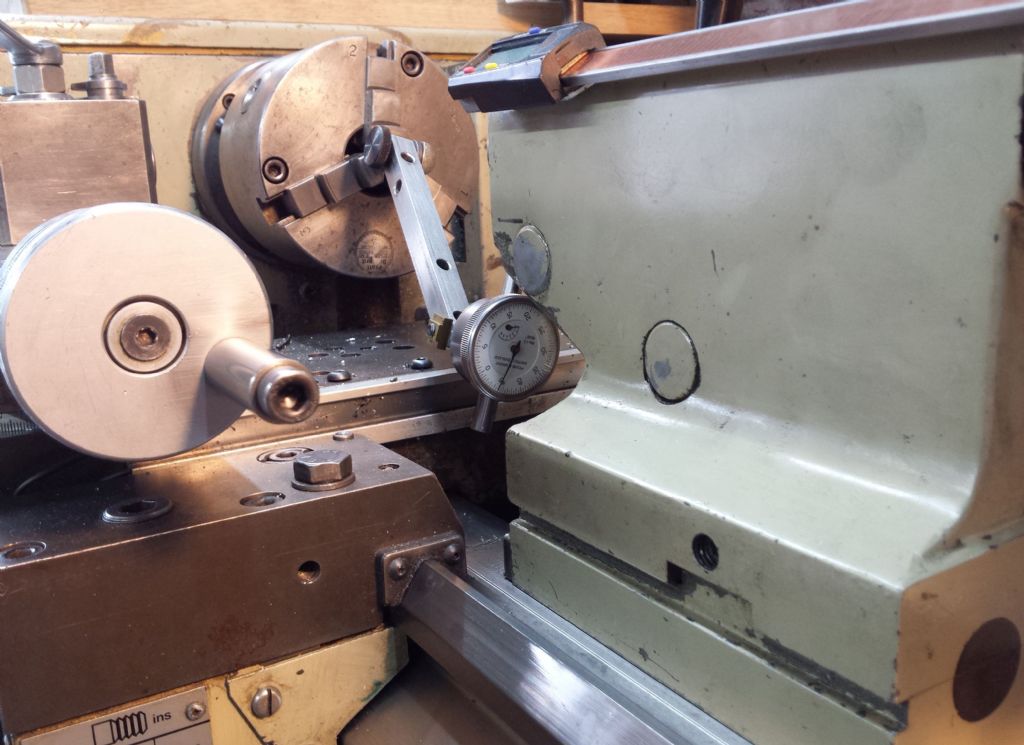Many lathes are made with the tailstock slightly higher than the mandrel so that when the tailstock wears it is still within reasonable limits. Even the Schlesinger limits are -0 +.0008" or so for this measurement. And note, this measurement is actual alignment, which is half of Total Indicated Runout. So if you have .003" TIR, that is only .0015" actual shaft offset and probably is just how the manufacturer intended it to be.
I would not be too hasty to remove metal from the tailstock or to tinker with the headstock alignment. If you can put a piece of 1" bar about 6" long between centres and turn it parallel within .001" you really have nothing much to worry about. And if it does turn a taper greater than .001", you can adjust that out by offsetting the tailstock sideways without touching the vertical alignment.
Those concerned that if we want to drill a .010" diameter hole and the TIR is .003" the drill will be .003" off target and snap etc, should remember that it is only .0015" off centre and no hobbyist tailstock chuck is going to hold a drill to any greater accuracy than that anyhow.
Leave well enough alone, I reckon.
Edit: PS, just read your correction post. If TIR is .015mm (aka .0006" your misalignment is .0003".
your misalignment is .0003".
And if you are worried about this affecting a 3" diameter drilled hole, just stop it and get turning.
If you want those sorts of accuracies you will need a toolroom cylindrical grinder, not a lathe.
But in the real world, I would drill undersize and bore to the final diameter. This is the usual way of machining couplings and uni joints of this size. You should be able to bore to .001" to .0005" accuracy if you take small final cuts and allow for spring in the boring bar by taking several cuts at the same setting to get final size.
Edited By Hopper on 01/09/2015 06:09:23
Edited By Hopper on 01/09/2015 06:11:34
Edited By Hopper on 01/09/2015 06:16:25
 Ian P.
Ian P.






